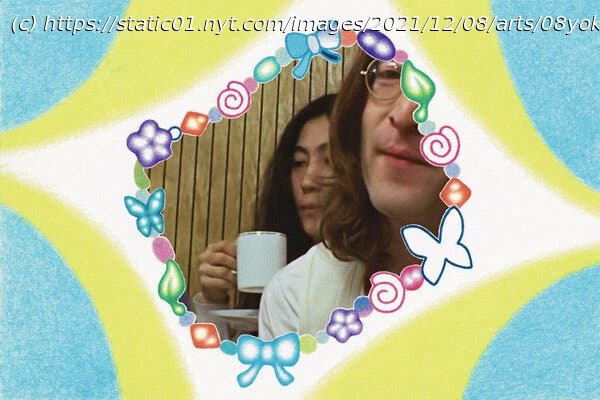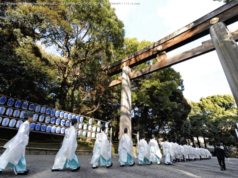In Peter Jackson’s “The Beatles: Get Back,” Ono is a performance artist at the height of her powers.
Early in “The Beatles: Get Back,” Peter Jackson’s nearly eight-hour documentary about the making of the album “Let It Be,” the band forms a tight circle in the corner of a movie soundstage. Inexplicably, Yoko Ono is there. She perches in reach of John Lennon, her bemused face oriented toward him like a plant growing to the light. When Paul McCartney starts to play “I’ve Got a Feeling,” Ono is there, stitching a furry object in her lap. When the band starts into “Don’t Let Me Down,” Ono is there, reading a newspaper. Lennon slips behind the piano and Ono is there, her head hovering above his shoulder. Later, when the group squeezes into a recording booth, Ono is there, wedged between Lennon and Ringo Starr, wordlessly unwrapping a piece of chewing gum and working it between Lennon’s fingers. When George Harrison walks off, briefly quitting the band, there is Ono, wailing inchoately into his microphone. At first I found Ono’s omnipresence in the documentary bizarre, even unnerving. The vast set only emphasizes the ludicrousness of her proximity. Why is she there? I pleaded with my television set. But as the hours passed, and Ono remained — painting at an easel, chewing a pastry, paging through a Lennon fan magazine — I found myself impressed by her stamina, then entranced by the provocation of her existence and ultimately dazzled by her performance. My attention kept drifting toward her corner of the frame. I was seeing intimate, long-lost footage of the world’s most famous band preparing for its final performance, and I couldn’t stop watching Yoko Ono sitting around, doing nothing. “The Beatles: Get Back” is being read by some as an exculpatory document — proof that Ono was not responsible for destroying the Beatles. “She never has opinions about the stuff they’re doing,” Jackson, who crafted the series out of more than 60 hours of footage, told “60 Minutes .” “She’s a very benign presence and she doesn’t interfere in the slightest.” Ono, also a producer on the series, tweeted an article without comment that claims she is merely performing “mundane tasks” as the band gets to work. In the series, McCartney himself — from the vantage of January 1969, more than a year before the band’s public dissolution — pokes fun at the idea that the Beatles would end “because Yoko sat on an amp.” Her presence has been described as gentle, quiet and unimposing. Indeed, she is not the set’s most meddlesome interloper: That is Michael Lindsay-Hogg, the hapless director of the original documentary “Let It Be,” who keeps urging the band to stage a concert in an ancient amphitheater in Libya or perhaps at a hospital for children suffering from reassuringly minor ailments. And yet there is something depressing about the recasting of Ono as a quiet, inconspicuous lump of a person.






